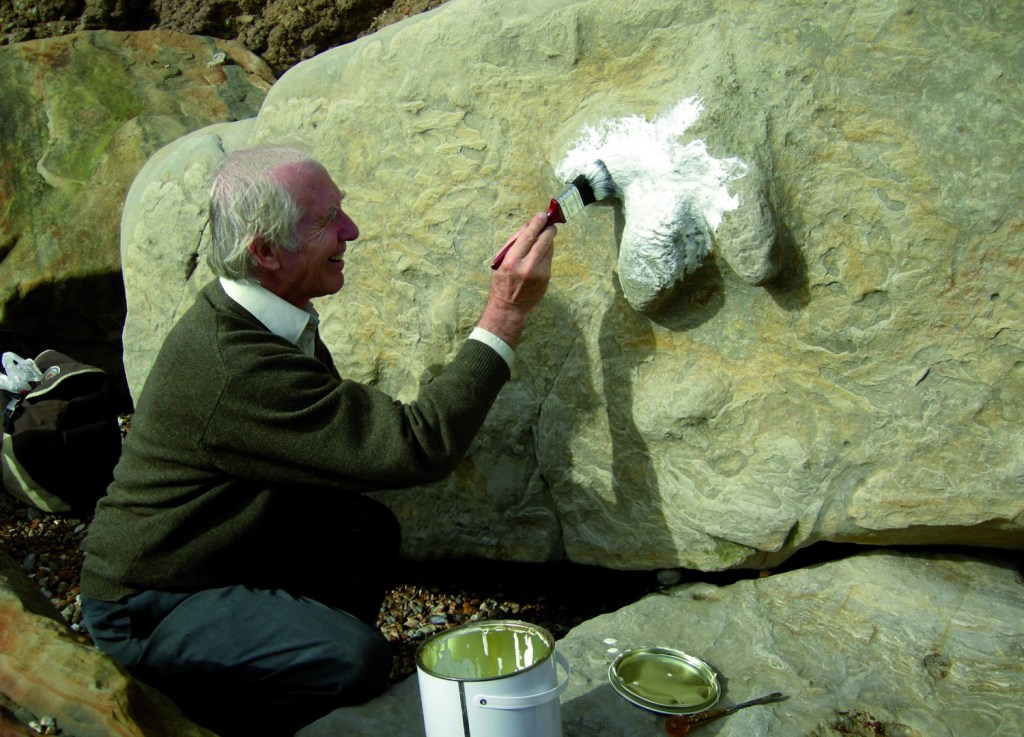Iguanodon foot-casts found near Hastings
Ken Brooks (UK)
On 26 September 2006, the BBC television programme South East Today featured a report about dinosaur foot-casts that had been discovered “somewhere along the beach near Hastings”. The following day, Dale Smith and I, who are both members of the Hastings and District Geological Society (HDGS), decided to investigate – but first we had to locate the cast on a 5-mile (7.5km) stretch of coast.


We decided to walk westwards from Cliff End along the beach towards Fairlight. After about two miles (3km) and by using local knowledge of the cliffs, we eventually found the foot-cast on a large block of siltstone at Lee Ness. At this location, there is a siltstone ledge, about 1.5m thick, that dips down to beach level. The cast measured 45cm from heel to toe and was identified as belonging to the dinosaur, Iguanodon.

A few days later, HDGS members, Colin Parsons, Peter Marsden and I, returned to the site to make a mould of the foot-cast. This involved carrying a variety of materials to the site, including containers of fresh water, five kilos of plaster of Paris, a roll of hessian, a gas blowlamp, a mixing bowl, a tin of liquid latex rubber, brushes and scissors.

After using the blowlamp to remove moisture from the structure of the cast, it was coated with latex rubber. This was followed by layers of hessian and plaster of Paris. While waiting for this to set hard, further investigation of fallen blocks of siltstone revealed a number of less well-preserved Iguanodon foot-casts as well as two rarer theropod foot-casts. The plaster mould of the Iguanodon foot-cast was then successfully removed. It will now be used to produce fibreglass reproductions for display and teaching aids.

The siltstone ledge, which is within the Lower Ashdown Formation (‘Fairlight Clay’), is known for its well-preserved dinosaur foot-casts. These were formed during the Lower Cretaceous (138 million years ago), during which grazing dinosaurs left their footprints in soft mud or clay. The foot impressions then filled with a silty sediment that later became lithified into a siltstone. Much later, erosion of the cliff removed the soft, underlying clay. This revealed the footprints as casts at the base of the siltstone and is how the beautiful foot-cast, which is the subject of this article, came to be found.
Further reading
Geology and Fossils of the Hastings Area, by Ken Brooks (2nd edition), Ken & Diana Brooks (2014), 76 pages (paperback), ISBN: 9780957453050.
Early Cretaceous Environments of the Weald, Guide No 55, by Alistair Ruffell, Andrew Ross and Kevin Taylor, The Geologists’ Association, London (1996), 81 pages (paperback), ISBN: 0900717882.

